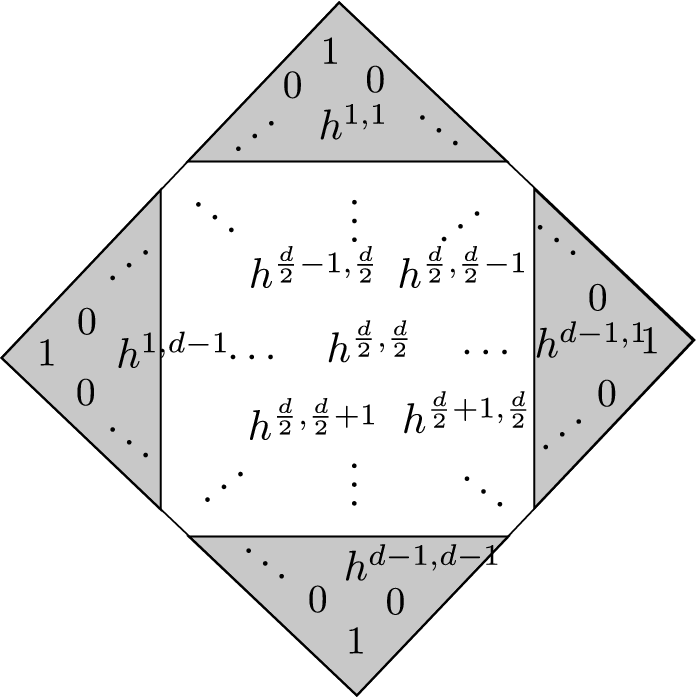Given a compact Kähler manifold Y, we know that the cohomology groups H⋆(Y,C) have a Hodge decomposition Hp,q. Now because we have Poincaré duality, and the comparisons between singular and De Rham cohomologie, we know that any other space Z that has the same homotopy type as Y will have the same cohomology groups. Consequently they will share the same Hodge diamond, thus its symmetries.

This means that the symmetry of the Hodge diamond is mostly attached to the homotopy type of Y . This is not surprising anymore because it can already be seen from the equivalence of the De Rham cohomology which is analytic, and the Betti cohomology which is something purely simplicial. In fact, it can also be seen from the (smooth) homotopy invariance of De Rham cohomology.
This symmetry can be understood using the Quillen-Segal formalism as follows. Given Y , let’s consider Ytop ∈ Top. We have a Quillen equivalence U : Top → sSetQ, where U = Sing is the singular functor whose left adjoint is the geometric realization. When we consider the comma category sSetQU[Top] = sSet ↓ U, we are literally creating in French a “trait d’union”, between the two categories. And when we consider the subcategory of Quillen-Segal objects then we have a triangle that descends to a triangle of equivalences between the homotopy categories. In fact there is a much better statement.

It turns out that if we choose the Joyal model structure sSetJ, we get the Homotopy hypothesis.
A fibrant replacement of Y in the model category sSetQU[Top], is a trivial fibration F →∼ U(Y), where F is fibrant in sSetQ, that is a Kan complex. But a Kan complex is exactly an ∞-groupoid. ∞-Groupoids generalize groupoids, and still are category-like. In particular we can take their opposite (or dual), just like we consider the opposite category Cop of a usual category.
Given Y as above, we can think of the mirror of Y as the opposite ∞-groupoid Fop. A good approximation of Fop can be obtained by the schematization functor à la Toën applied to the simplicial set (quasicategory) underlying Fop. We can take as model for F the fundamental ∞-groupoid Π∞(Y). And depending on the dimension it’s enough to stop at the corresponding n-groupoid. Toën schematization functor can also be obtained from the Quillen-Segal formalism applied to the embedding
U : Sh(Var(C)) ֒→ sPresh(Var(C),
where on the right hand side we consider the model category of simplicial presheaves à la Jardine-Joyal. The representability of the π0 of the schematization has to be determined by descent along the equivalence type.
